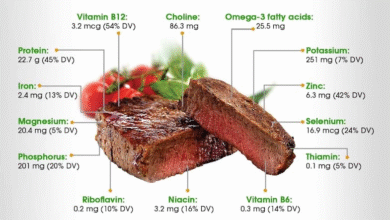Walking Reduces Cancer Risk: Key Findings from Oxford Study

Walking reduces cancer risk, as highlighted by recent research from Oxford University, which underscores the significant health benefits of engaging in daily physical activity. This study revealed that even light exercises, such as casual walking, can contribute to lower cancer incidence among individuals. While structured workout routines may seem daunting, it turns out that simply increasing your daily steps can have profound effects on overall health and cancer prevention. Specifically, participants who walked just an additional 2,000 steps a day enjoyed an 11% reduction in cancer risk, showcasing how accessible exercise can be. Emphasizing the importance of maintaining an active lifestyle, this research aligns with the broader understanding of exercise and cancer prevention, suggesting that even moderate levels of physical activity can yield remarkable health outcomes.
Recent findings regarding the correlation between physical movement and health have sparked renewed interest in light exercise as a vital component of wellness. The notion that simple activities, such as walking for health, can significantly mitigate cancer risks is gaining traction. Engaging in regular physical activity not only enhances metabolic function but also reduces harmful inflammation associated with sedentary lifestyles. Indeed, even fulfilling daily tasks can qualify as light exercise, contributing to a healthier life. As awareness grows about the benefits of daily steps and health, such studies encourage us to embrace movement in all its forms.
The Impact of Daily Walking on Cancer Risk
Recent research indicates that simply increasing your daily steps can significantly reduce the likelihood of developing cancer. The Oxford study highlighted that individuals who walk as few as 7,000 steps daily exhibited an 11% lower risk of cancer compared to those who average only 5,000 steps. Remarkably, this risk drops even further—by 16%—for those who manage 9,000 steps per day. This finding underscores the power of low-intensity physical activity, such as walking, in promoting long-term health benefits and cancer prevention.
The implications of this study are far-reaching, suggesting that not only gym-goers but also those who engage in everyday activities can contribute to their overall health through walking. Casual routines, such as shopping or household chores, are not only fulfilling but can also be seen as direct contributors to lowering cancer risks. Therefore, integrating more walking into one’s daily schedule can be a simple yet effective strategy for enhancing health outcomes.
Why Light Physical Activity Matters for Health
While high-intensity workouts have long been promoted for health and fitness, this research reveals that even light exercise, such as walking, plays a crucial role in cancer prevention. The benefits of physical activity extend beyond calorie burning; they include reducing inflammation—one of the key factors linked to cancer development. Experts emphasize that any level of physical activity, including light exercises, contributes positively to metabolic function and overall health.
This emphasizes the importance of movement in our daily lives; walking can easily be incorporated into one’s routine, making it an accessible option for many. The findings support existing national guidelines that advocate for increasing daily steps and engaging in regular light activity, painting a more inclusive picture of fitness that prioritizes health at all activity levels.
The Science Behind Walking and Cancer Prevention
The Oxford study utilized data from over 85,000 individuals, meticulously analyzing their physical activity through wearable trackers rather than relying on self-reported measures. This rigorous approach provided a clearer picture of the relationship between walking and cancer risk. As a result, the study presents robust evidence suggesting that increasing daily steps correlates with a significant decrease in cancer incidence, reinforcing the vital role of regular movement in health maintenance.
Researchers found that those engaged in higher levels of daily activity were 26% less likely to face cancer compared to their less active counterparts. This establishes a direct link between physical activity levels and cancer risk reduction, highlighting how vital movement is for maintaining health and longevity. The study encourages a broader perspective on physical activity, emphasizing that every step counts when it comes to health.
Everyday Activities: A Hidden Ally Against Cancer
Incorporating everyday activities into your routine can be an effective strategy for reducing cancer risk. Simple tasks, such as walking the dog, gardening, or even cleaning the house, contribute to overall physical activity levels. The Oxford study’s findings highlight that these seemingly mundane tasks can be just as impactful as structured exercise in maintaining health and preventing disease. Individuals should view these daily movements as crucial opportunities for physical activity.
Moreover, increasing one’s activity level doesn’t require a major overhaul of daily routines. By adjusting minor habits, such as taking the stairs instead of an elevator or parking farther from store entrances, individuals can significantly boost their daily step counts. Such lifestyle changes not only foster better health outcomes but also lower cancer risk, promoting a holistic approach to fitness and wellness.
Integrating Walking into Your Lifestyle
To harness the benefits of walking for health, it is essential to incorporate it seamlessly into your daily life. Setting a goal of 7,000 or more steps a day doesn’t necessarily demand dedicated workout time; instead, it can be fostered through habitual modifications. For example, setting reminders to take short walks throughout the day or participating in walking groups can provide both motivation and social engagement.
Additionally, utilizing technology can support this goal. Many smartphones and fitness trackers offer step counting functionalities that encourage individuals to monitor their progress. This blend of social interaction and technology creates a community-driven approach to enhancing physical activity, ultimately aiding in cancer risk reduction. By embedding walking into daily routines, everyone can contribute to their health without feeling overwhelmed by strenuous exercise.
Health Benefits Beyond Cancer: Why Walking Matters
Walking isn’t just beneficial for reducing cancer risk; it also promotes overall health and well-being. Regular walking contributes to improved cardiovascular health, better mental health, and enhanced mobility. This low-impact exercise can be adopted by almost anyone, making it a practical and appealing choice for individuals across various demographics.
Additionally, as recent studies indicate, walking can help reduce inflammation—an important factor in various chronic diseases, including cancer. Thus, the widespread recommendation of engaging in daily light physical activity is not just preventive; it’s an essential component of maintaining a healthy lifestyle and combating an array of health issues.
Monitoring Your Steps for Better Health
Keeping track of your daily steps can be an excellent motivator to improve one’s physical activity. Studies suggest that using wearable fitness trackers can significantly enhance accountability and encourage individuals to reach their health goals. By monitoring progress, individuals can set achievable targets that allow them to gradually increase their activity levels while gaining insights into how their movements correlate with health outcomes.
This data-driven approach aligns with the findings from the Oxford study, which emphasizes the precise measurement of physical activity in relation to cancer risk reduction. By being aware of physical activity levels, people can take informed steps toward improving their health and ultimately lowering their cancer risk through actionable insights.
Walking and Mental Well-Being: A Dual Benefit
In addition to physical health benefits, walking is also excellent for mental well-being. Engaging in regular light exercise such as walking can help alleviate stress, reduce symptoms of anxiety and depression, and improve mood. The endorphins released during physical activity contribute to a sense of happiness and mental clarity, creating a healthy cycle that further motivates individuals to stay active.
Moreover, walking outdoors allows for additional benefits such as fresh air and exposure to nature, which have been shown to bolster mental health. Thus, making walking a regular part of daily life not only aids in physical fitness and cancer prevention but also enhances emotional and psychological well-being.
Community Walking: Encouraging Group Activity for Health
Participating in community walking programs can offer social support while promoting health benefits. Group walking can help individuals feel more motivated and engaged, allowing them to enjoy the process of staying active. By forming walking clubs or partnerships, individuals create a supportive environment that encourages accountability and fosters friendships.
Moreover, community-based initiatives can raise awareness about the significance of daily physical activity, such as walking, in reducing cancer risk. By creating social platforms for walking, communities can promote health at a larger scale, emphasizing that physical activity is not just an individual responsibility but a collective pursuit that benefits everyone.
Daily Steps: The Key to a Healthier Future
As the research indicates, the number of steps we take daily is a critical indicator of our health. Adopting a step goal, whether it’s 7,000 or more, can lead to substantial health benefits, including a reduced cancer risk. This focus on daily movement is not just a trend; it aligns with a growing recognition of the importance of physical activity in leading a healthy life.
Encouraging a culture that values daily physical activity, specifically walking, can contribute to a healthier society. With simple lifestyle adjustments and community support, everyone can be part of this movement towards enhancing health, preventing diseases, and ultimately fostering a future of well-being.
Frequently Asked Questions
How does walking reduce cancer risk according to recent studies?
Recent studies, including one from Oxford University, indicate that walking can significantly reduce cancer risk. The research showed that individuals who engage in higher daily step counts, such as 7,000 to 9,000 steps, have lower cancer incidences, with up to a 26% reduced risk compared to less active individuals. This emphasizes the benefits of physical activity, including light exercise like walking, in cancer prevention.
What role does light exercise, like walking, play in cancer prevention?
Light exercise, particularly walking, has been identified as a crucial factor in cancer prevention. The study highlighted that even casual walking is effective, with daily activity tracking showing that those who walked more had a significantly lower risk of developing cancer. Incorporating simple physical activities into daily routines can greatly contribute to overall health and reduce cancer risk.
How many steps should one walk daily to help reduce cancer risk?
To help reduce cancer risk, aim for at least 7,000 steps per day. Research from Oxford found that this step count is associated with an 11% lower cancer risk compared to walking 5,000 steps. Increasing to 9,000 steps per day can further decrease cancer risk by 16%, highlighting the value of maintaining a higher level of daily physical activity.
What are the physical activity benefits related to walking and cancer risk?
Walking presents numerous physical activity benefits, particularly in reducing cancer risk. According to recent findings, higher daily activity levels correlate with a significantly lower incidence of cancer. This includes not just walking for health but also incorporating light exercises into everyday activities, which have been shown to boost metabolic function and decrease inflammation, factors linked to cancer development.
Can daily steps from casual activities also lower cancer risk?
Yes, daily steps from casual activities, such as walking during errands or household chores, can effectively lower cancer risk. The Oxford study revealed that cumulative physical activities contribute to reduced cancer incidences, emphasizing that any form of movement, including casual walking, plays a role in cancer prevention.
How does sedentary behavior relate to cancer risk and walking?
Sedentary behavior is strongly linked to increased cancer risk due to associated inflammation and metabolic decline. Engaging in physical activity like walking helps combat these effects by enhancing metabolic function and reducing inflammation. The findings from recent research stress the importance of altering sedentary lifestyles to incorporate walking and other forms of movement to mitigate cancer risk.
| Key Findings | Details |
|---|---|
| Walking reduces cancer risk | A study by Oxford researchers shows that walking, even at a casual pace, lowers cancer incidence. |
| Importance of Steps | Taking 7,000 steps daily lowers cancer risk by 11%, and 9,000 steps lower it by 16% compared to 5,000. |
| Overall Activity Impact | Those with the most daily activity have a 26% lower cancer risk, accounting for various factors such as BMI. |
| Study Methodology | The research analyzed data from 85,394 individuals using wearable activity trackers and correlated it with cancer diagnoses. |
| Expert Opinion | Researchers highlight that both light and moderate activities, including walking, are beneficial for reducing cancer risk. |
Summary
Walking reduces cancer risk significantly, as demonstrated by recent research from Oxford University. The study revealed that increasing daily steps, even to a modest level, can dramatically decrease the likelihood of developing cancer. The findings emphasize that any form of physical activity, including light exercises like walking and household chores, plays a crucial role in cancer prevention. By incorporating regular walking into daily routines, individuals can lower their cancer risk and improve overall health.




